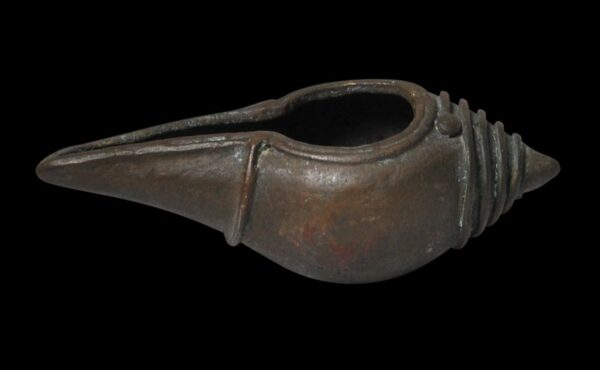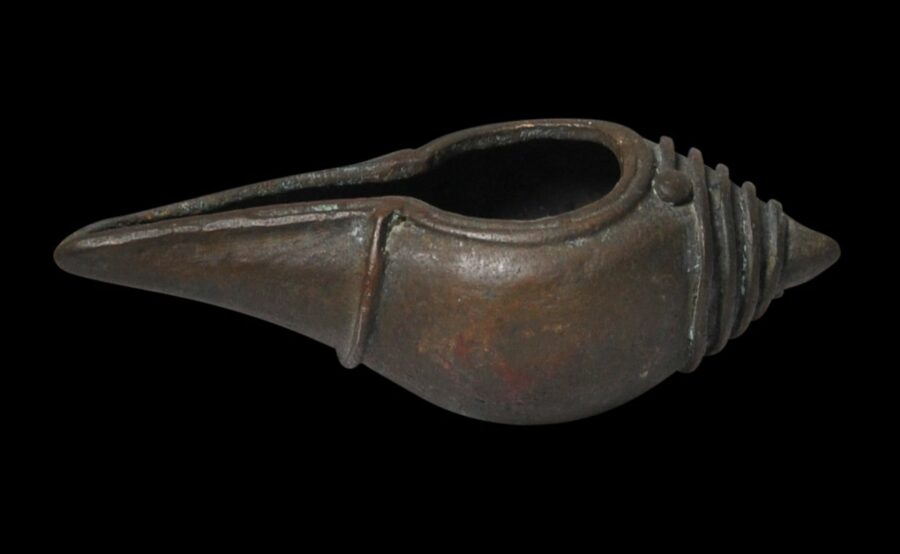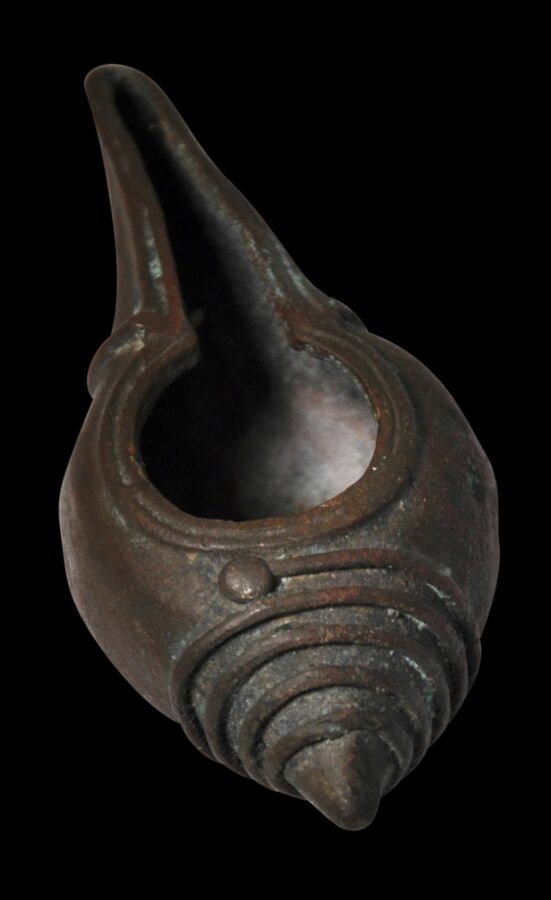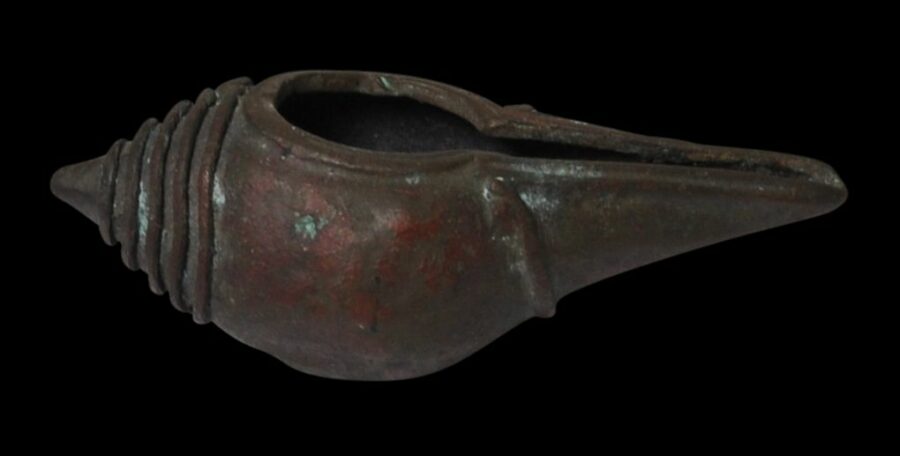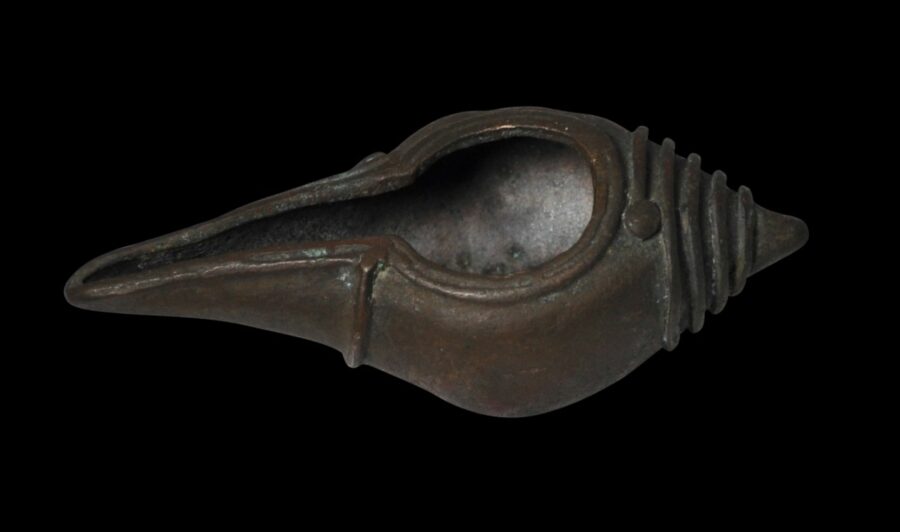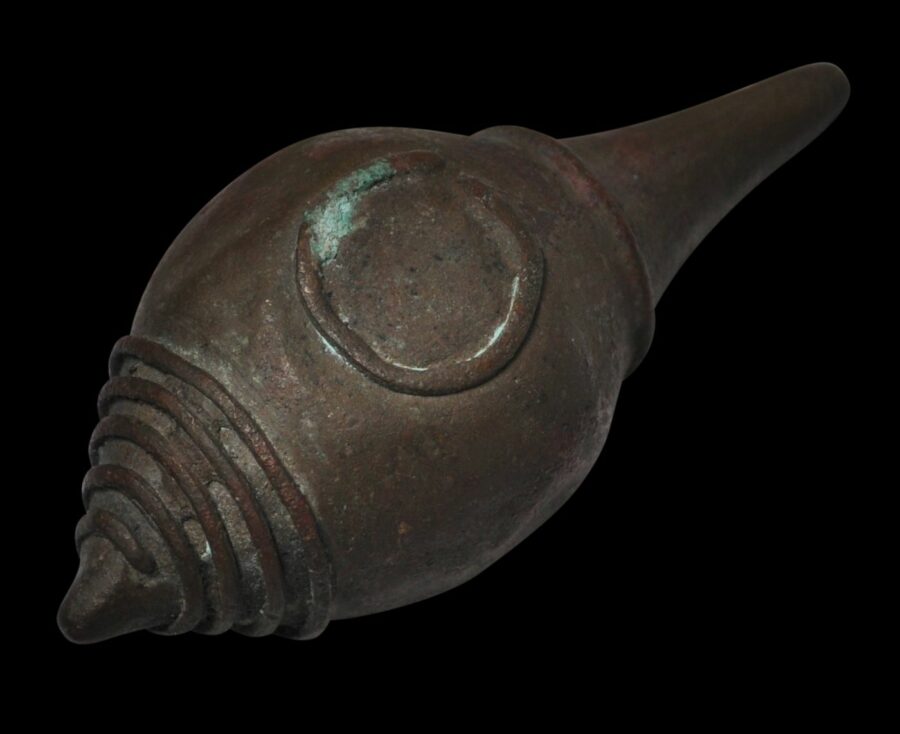This small bronze conch has been cast with thin, light walls. As a consequence, it has light weight in the hand. The end is cast with a prominent spiral. The underside has been cast with a flat section to all the conch to sit evenly.
The conch is used in both Hinduism and Buddhism. The conch is one of the attributes of Vishnu. It is also blown to dispel evil, and also used in lustration, whereby it would have been used to hold and then pour water and other liquids over representations of deities, as an offering.
Conch shells are important ritual objects in Tibetan Buddhism as well. They are used as ceremonial trumpets in prayer rituals, to summon monks to prayer, to summon spirits as well, and to invoke rain and water (Reynolds, 1978, p. 80.) Shanghai Museum (2001, p. 136) illustrates am actual conch shell trumpet carved with eight small Buddhas which is said to have been a gift from the Qianlong Emperor to the Dalai Lama.
The conch-shaped vessel here has obvious age and a varying dark-green patina.
References
Lama, M.N. Ritual Objects & Deities: An Iconography on Buddhism & Hinduism, Lama Art, 2003.
Rawson, P., Tantra, Arts Council of Great Britain, 1971.
Reynolds, V., Tibet: A Lost World: The Newark Museum Collection of Tibetan Art and Ethnology, The American Federation of Arts, 1978.
Shanghai Museum, Treasures from Snow Mountains: Gems of Tibetan Cultural Relics, Shanghai Museum, 2001.


